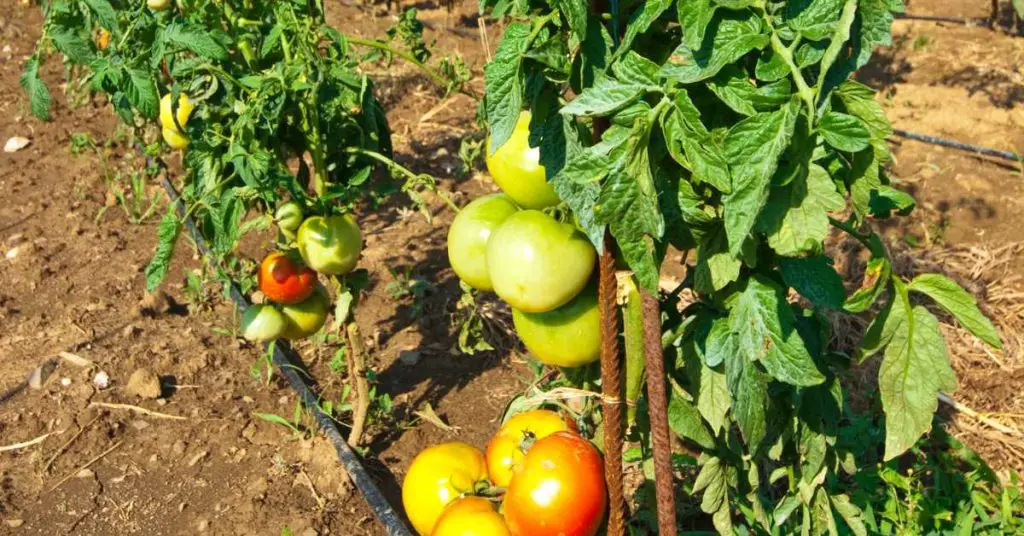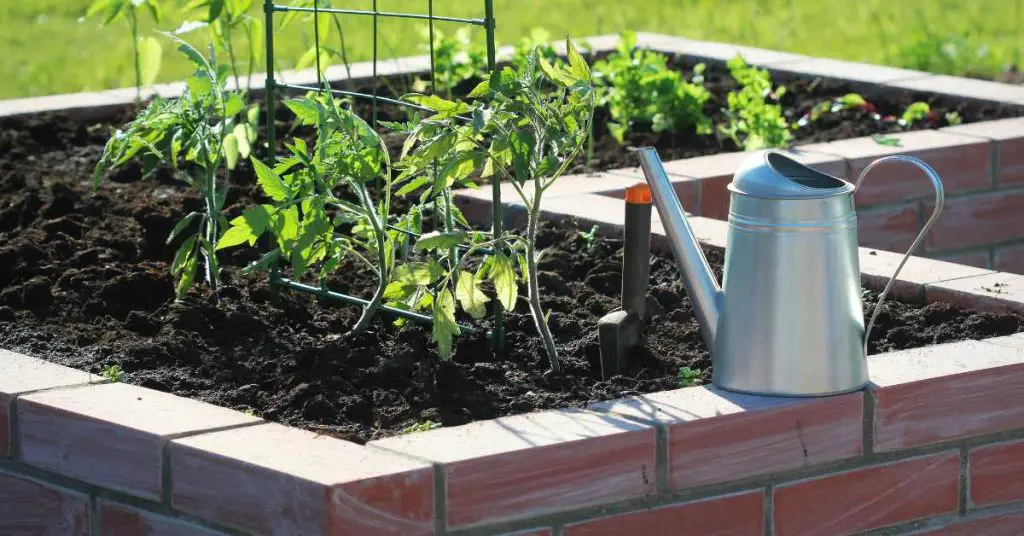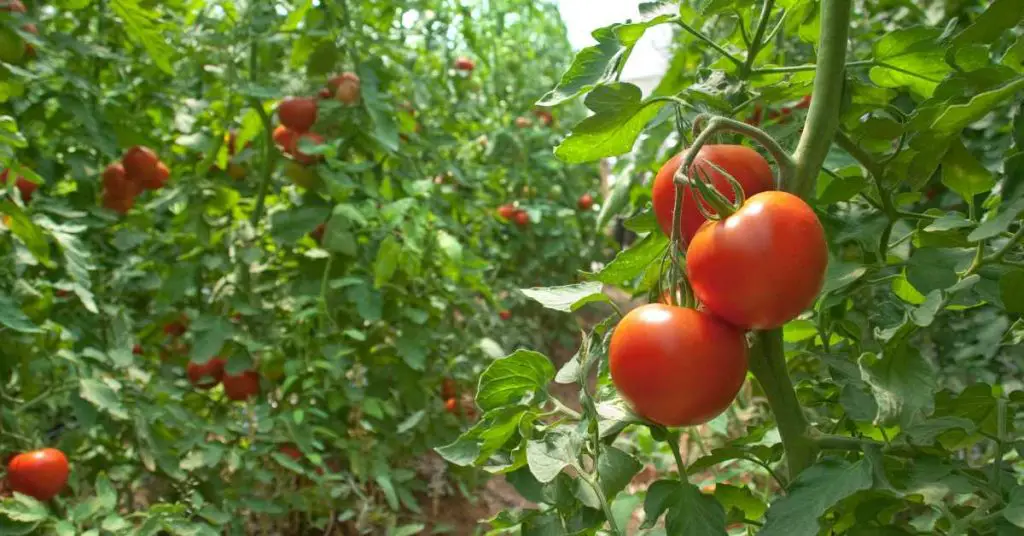How much sunlight do tomatoes need? Tomatoes need a minimum of 6-8 hours of direct sunlight daily for healthy growth, while 8-10 hours are ideal for flowering and fruiting stages. Sufficient sunlight exposure is essential for robust growth, strong disease resistance, and abundant harvests. To maximize your tomatoes’ potential, ensure they receive enough sunlight throughout the growing season, taking into consideration factors like plant variety, location, and climate. Proper plant spacing and pruning techniques can also enhance sunlight exposure, ultimately leading to a more successful tomato crop.
Hey there, fellow tomato enthusiasts! If you’re anything like me, you’re always on the hunt for ways to grow the juiciest, most delicious tomatoes possible. But have you ever stopped to wonder, “How much sunlight do tomatoes need?”
Well, my friends, wonder no more! I’m here to help you unlock the secrets of sunlight for your tomato plants, so you can bask in the glory of a bountiful harvest.
Let’s dive in and discover the power of the sun in your quest for tomato greatness!
Tomato Plants Naturally Search For Light
Phototropism in tomato plants
Tomato plants, like most plants, have a natural instinct to seek out light. This behavior is called phototropism, and it’s pretty amazing to watch. Have you ever noticed how your tomato plants seem to “lean” toward the sun? That’s phototropism in action! Here’s what’s going on:
- Tomato plants detect light using specialized cells called photoreceptors
- These photoreceptors help the plant determine the direction and intensity of light
- In response to light, the plant releases hormones that promote growth on the side of the stem facing away from the light source
- As a result, the stem bends toward the light, allowing the plant to maximize its exposure
Importance of sufficient sunlight
So why do tomato plants go to all this trouble to find the light? Well, they need sunlight for photosynthesis, the process by which they convert light, water, and carbon dioxide into glucose for energy and growth. Without enough sunlight, a tomato plant will struggle to grow, produce fewer (and smaller) fruits, and be more susceptible to pests and diseases. That’s why it’s essential to ensure your tomatoes get the right amount of sunlight.
How Much Sun Do Tomatoes Need?
General sunlight requirements
As a general rule, tomatoes need at least 6-8 hours of direct sunlight each day to thrive. However, they will be happiest with 8-10 hours of sunlight, especially when they’re setting fruit. Here’s a quick breakdown of sunlight requirements for different stages of tomato growth:
| Growth Stage | Sunlight Requirement |
|---|---|
| Germination | 14-16 hours |
| Seedling | 14-16 hours |
| Vegetative | 6-8 hours |
| Flowering | 8-10 hours |
| Fruiting | 8-10 hours |
Variations in sunlight requirements based on tomato variety
Keep in mind that sunlight requirements can vary slightly depending on the tomato variety you’re growing. Some heirloom varieties, for example, might need a bit more sunlight, while others can tolerate a bit less. Be sure to check the specific requirements for your chosen tomato variety, but remember that the 6-8 hour minimum is a good starting point.

How Much Light Do Tomatoes Need to Germinate?
Ideal light conditions for germination
Germination is the process by which a seed sprouts and begins to grow into a new plant. For tomatoes, germination typically takes place indoors under controlled conditions. At this stage, tomatoes need a lot of light—14-16 hours per day—to encourage strong, healthy growth.
To achieve this, you can either use natural sunlight (if you have a sunny windowsill) or artificial light sources like fluorescent or LED grow lights. Keep in mind that using artificial lights allows you to control the light intensity and duration more precisely, which can help ensure your seedlings get off to a great start.
Effects of insufficient light on Germination
If your tomato seeds don’t get enough light during germination, they may still sprout, but they’ll likely be weak and leggy. This is because the seedlings will stretch themselves toward the light source, resulting in long, thin stems that can’t support the plant’s weight as it grows. To avoid this, make sure your seedlings receive the recommended 14-16 hours of light per day.
You can do this by starting your seeds in a greenhouse so that you can take advantage of the sunlight or you can start them indoors under a grow light.
Can You Grow Tomatoes in the Shade?
Challenges of growing tomatoes in the shade
Growing tomatoes in the shade can be a bit of a challenge. As we mentioned earlier, tomatoes need at least 6-8 hours of direct sunlight to grow well. If they don’t get enough sunlight, they may:
- Grow more slowly and produce fewer fruits
- Have a higher risk of developing diseases, like fungal infections
- Be more prone to pest infestations
That being said, it’s not impossible to grow tomatoes in the shade. You just need to set realistic expectations and choose the right tomato varieties.
Shade-tolerant tomato varieties
Some tomato varieties are more shade-tolerant than others, which means they can still produce a decent harvest with less sunlight.
Here are a few shade-tolerant varieties to consider:
Stupice: A small, early-maturing variety that produces an abundance of red, flavorful fruitsNorthern Delight: A cherry tomato variety that’s well-suited for cooler, shadier climatesSan Marzano: A classic Italian paste tomato that can tolerate some shade
Keep in mind that even shade-tolerant varieties will still need at least 4-6 hours of sunlight to produce fruit. So, if you’re growing tomatoes in a shady spot, be sure to choose a variety that’s up for the challenge.
Do Tomatoes Like Morning or Afternoon Sun?
Benefits of morning sun for tomatoes
Morning sun is usually the best option for tomatoes. This is because morning sunlight is less intense than afternoon sunlight, which can help prevent your plants from getting overheated or sunburned during the hottest part of the day. Plus, morning sun can help dry off any dew or moisture on the leaves, reducing the risk of fungal diseases.
Challenges of afternoon sun for tomatoes
While tomatoes can tolerate the afternoon sun, it’s generally not their favorite time of day. Afternoon sunlight can be quite intense, especially during the summer months, which can lead to overheating and sunburn. Additionally, the hot afternoon sun can cause soil to dry out more quickly, which means you may need to water your tomatoes more frequently to keep them happy.

Can Tomatoes Get Too Much Sun?
Signs of sunburn in tomato plants
Yes, tomatoes can definitely get too much sun. In fact, excessive sunlight can lead to a condition called sunscald, which is essentially sunburn for plants. Sunscald can cause the following symptoms:
- White or yellow patches on leaves and fruits
- Dry, brittle leaves that may curl or become distorted
- Reduced fruit production and quality
How to prevent sun damage
To protect your tomatoes from sun damage, you can:
- Provide some shade during the hottest part of the day, either by using shade cloth or by planting taller crops nearby to cast some shade on your tomatoes
- Water your plants regularly to help them stay hydrated and better tolerate the heat
- Mulch the soil around your plants to help conserve moisture and keep the roots cool
Remember, prevention is always better than cure, so be proactive in protecting your tomatoes from sun damage.
Choosing the Right Location for Tomatoes
Factors to consider when selecting a planting site
When choosing a spot to plant your tomatoes, there are several factors to consider:
- Sunlight exposure: As we’ve discussed, tomatoes need at least 6-8 hours of direct sunlight each day. Look for a spot that gets plenty of sun, preferably with morning sun exposure.
- Soil quality: Tomatoes prefer well-draining, fertile soil with a pH between 6.0 and 6.8. If your soil doesn’t meet these criteria, you can amend it with compost or other organic matter to improve its quality.
- Wind protection: Tomato plants can be sensitive to strong winds, which can damage their stems and leaves. Choose a location that provides some protection from wind, either from nearby structures or other plants.
- Space: Tomato plants need adequate space to grow and spread out. Be sure to leave at least 2-3 feet between plants to allow for proper air circulation and light penetration.
Ideal location characteristics
An ideal location for growing tomatoes will have:
- 6-8 hours of direct sunlight per day, with a preference for morning sun
- Well-draining, fertile soil with a pH between 6.0 and 6.8
- Protection from strong winds
- Adequate space for proper growth and air circulation
By choosing the right location for your tomatoes, you’ll set them up for a successful growing season.
Do Tomatoes Need Direct Sunlight?
Role of direct sunlight in tomato growth
Direct sunlight is crucial for tomato growth. As we mentioned earlier, tomatoes need sunlight for photosynthesis, which is the process by which they convert light, water, and carbon dioxide into glucose for energy and growth. Without direct sunlight, your tomato plants will struggle to produce enough energy for healthy growth and fruit production.
Risks of growing tomatoes without direct sunlight
Growing tomatoes without direct sunlight can lead to a number of problems, including:
- Weak, leggy growth due to a lack of energy for proper growth
- Reduced fruit production and quality
- Increased susceptibility to pests and diseases
So, while it may be tempting to try growing tomatoes in a less-than-ideal location, it’s important to remember that direct sunlight is key to their success.
Morning or Afternoon Sun: Which Is Better?
Comparing morning and afternoon sun for tomato growth
As we discussed earlier, morning sun is generally better for tomato growth because it’s less intense than afternoon sun, which can help prevent overheating and sunburn. Additionally, morning sun can help reduce the risk of fungal diseases by drying off any dew or moisture on the leaves.
Choosing the best sunlight exposure based on location
Depending on your specific location and climate, you may need to prioritize either morning or afternoon sun. In cooler climates, for example, tomatoes may benefit from the warmth of afternoon sun, while in hotter climates, morning sun may be a better option to prevent overheating.
Ultimately, it’s important to observe your tomato plants and adjust their sunlight exposure as needed to ensure they’re getting the best possible growing conditions.
Tips to Get More Light on Your Tomatoes
Pruning techniques to maximize light exposure
One way to ensure your tomato plants receive plenty of sunlight is by properly pruning them. Here are a few pruning tips to maximize light exposure:
- Remove lower leaves that are touching the ground, as they can become infected with soil-borne diseases
- Thin out dense growth to improve air circulation and light penetration
- Remove any dead or diseased leaves to prevent the spread of disease and improve overall plant health

Utilizing reflective surfaces to increase sunlight
Another way to get more light on your tomatoes is by using reflective surfaces, like aluminum foil or reflective mulch, to bounce sunlight back onto the plants. This can be particularly helpful in shadier areas or when growing tomatoes in containers. To use reflective surfaces effectively, simply place them around the base of your tomato plants or on nearby structures, like fences or walls.
Adjusting plant spacing for optimal light distribution
Finally, proper plant spacing is crucial for ensuring your tomatoes receive enough light. Overcrowding your tomato plants can lead to poor light penetration, which can result in weak, leggy growth and reduced fruit production. Be sure to space your tomato plants at least 2-3 feet apart (or more, depending on the variety) to allow for proper air circulation and light exposure.
Final Thoughts
To sum up, sunlight is a critical factor in the success of your tomato plants. By providing your tomatoes with at least 6-8 hours of direct sunlight per day, choosing the right location, and using proper planting and pruning techniques, you can set your tomatoes up for a bountiful harvest.
Remember that every garden is unique, and your tomatoes may need a little more or less sunlight depending on your specific location and climate. Keep an eye on your plants, adjust their growing conditions as needed, and you’ll be well on your way to enjoying delicious, homegrown tomatoes all season long.
Now go forth, fellow tomato enthusiasts, and let’s get growing!





